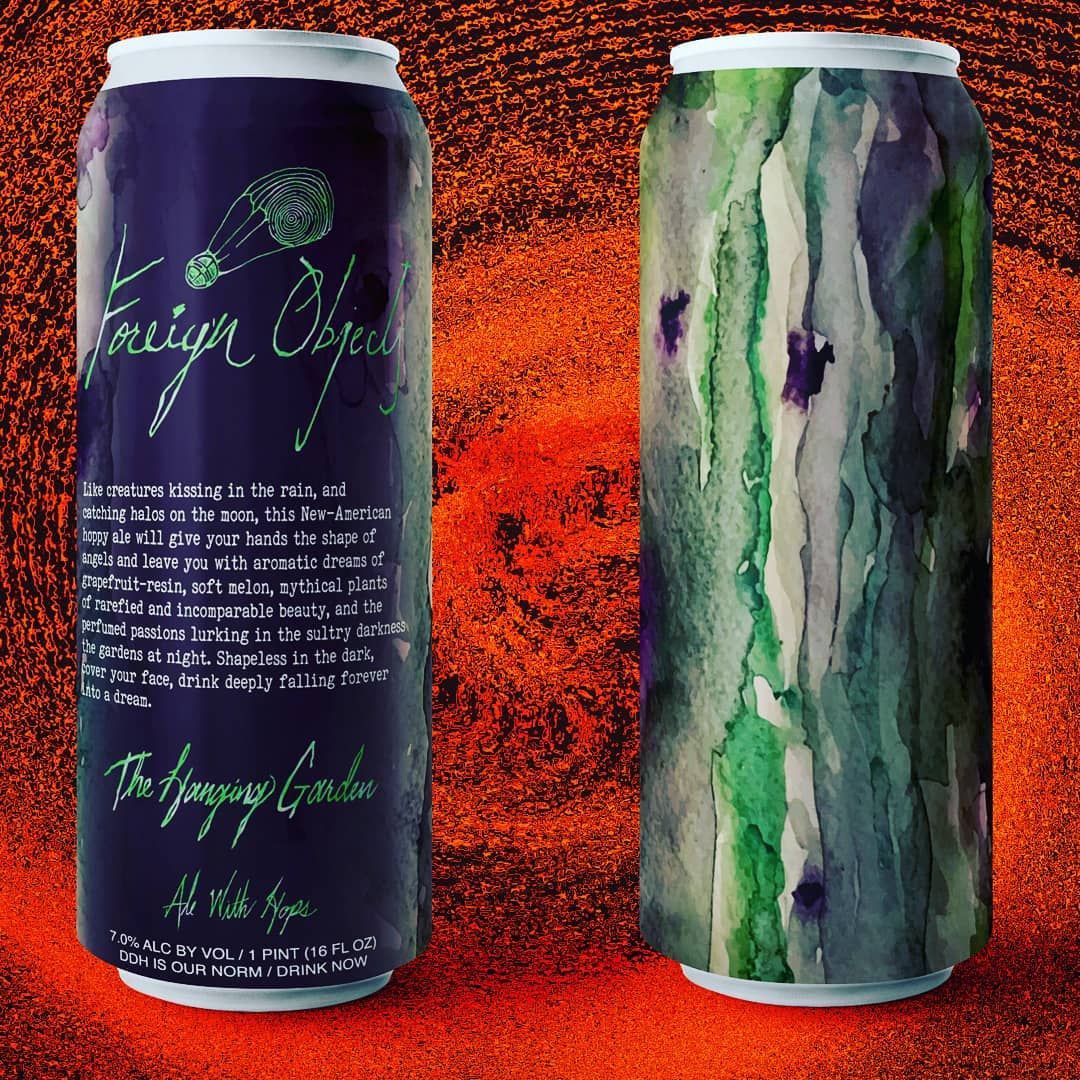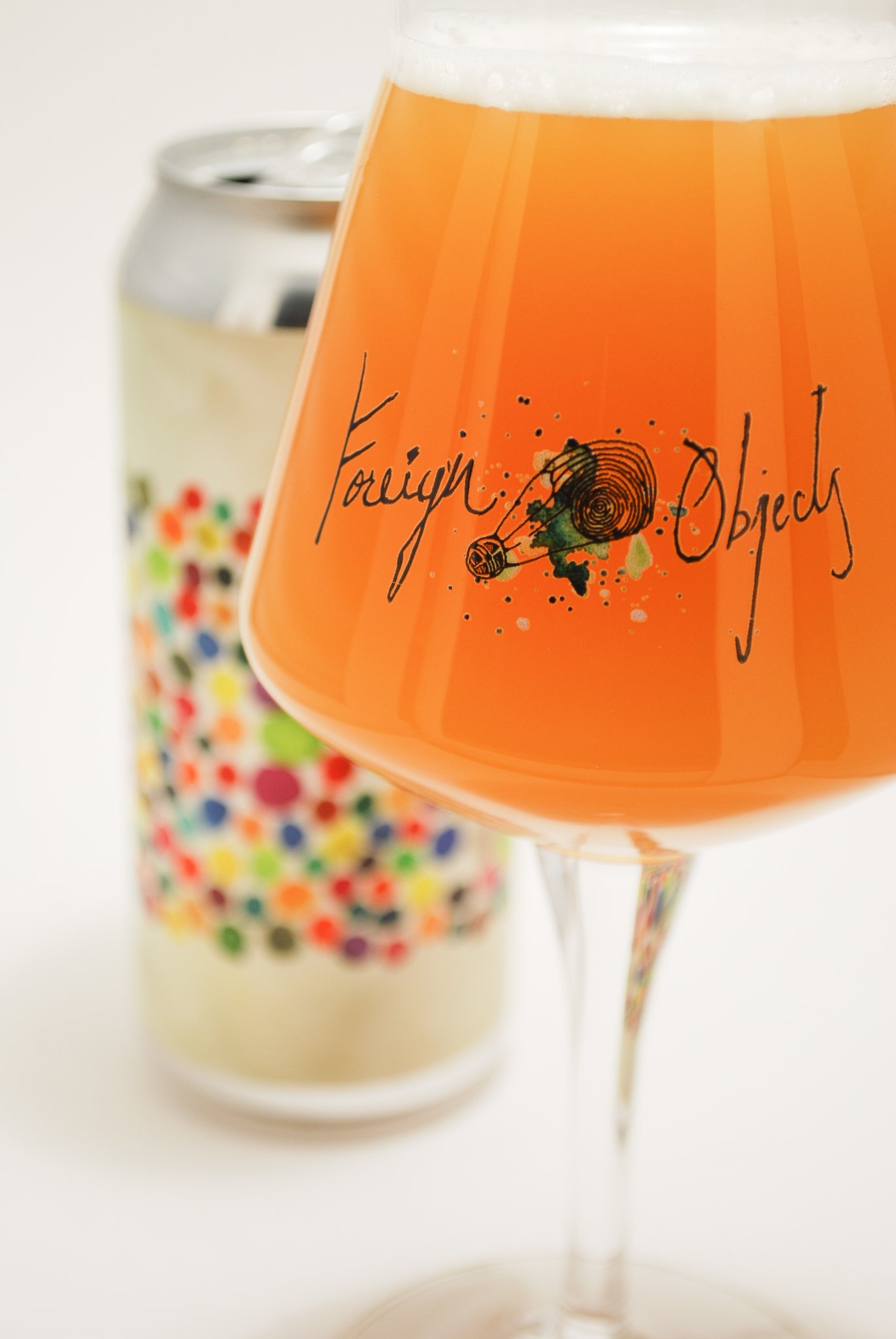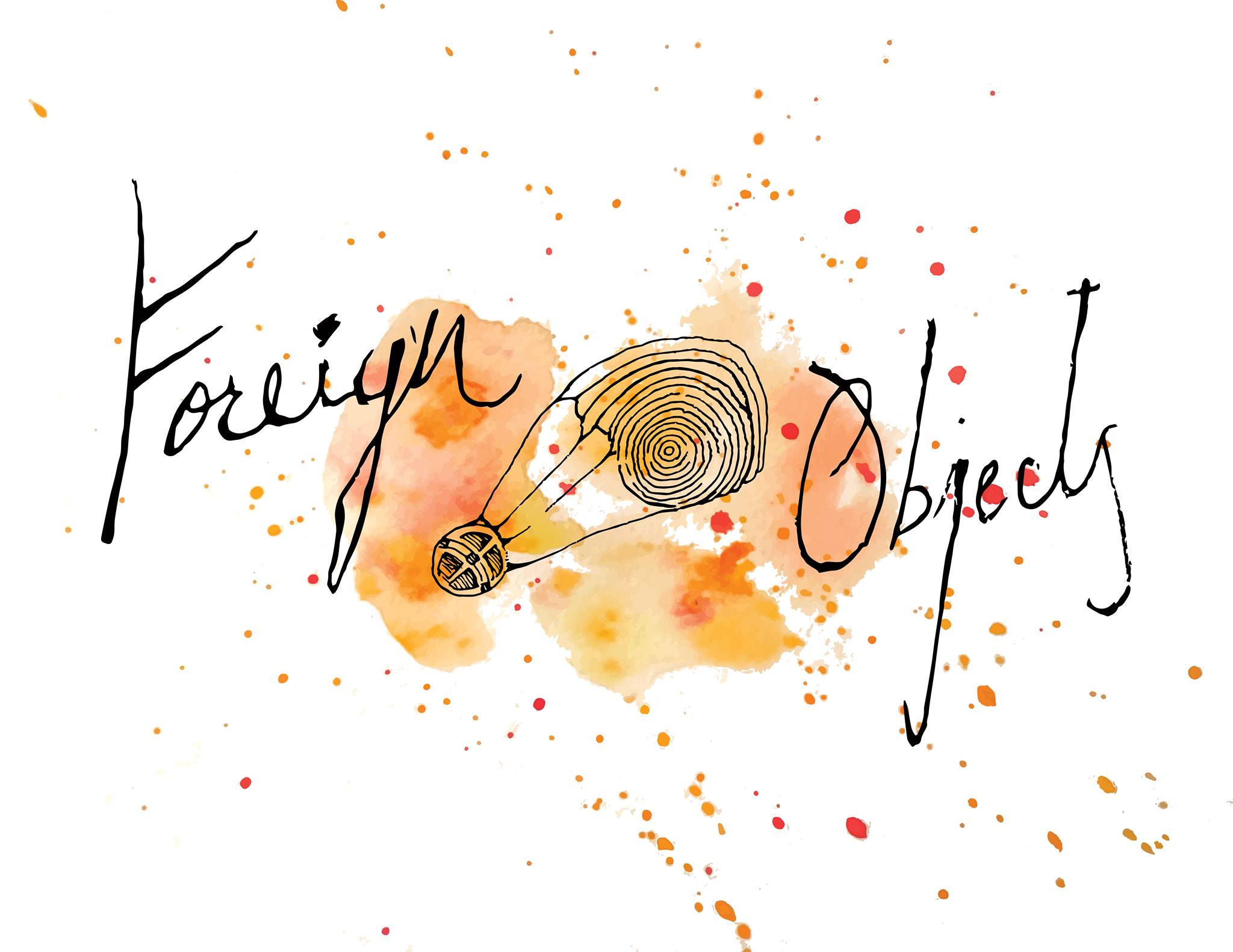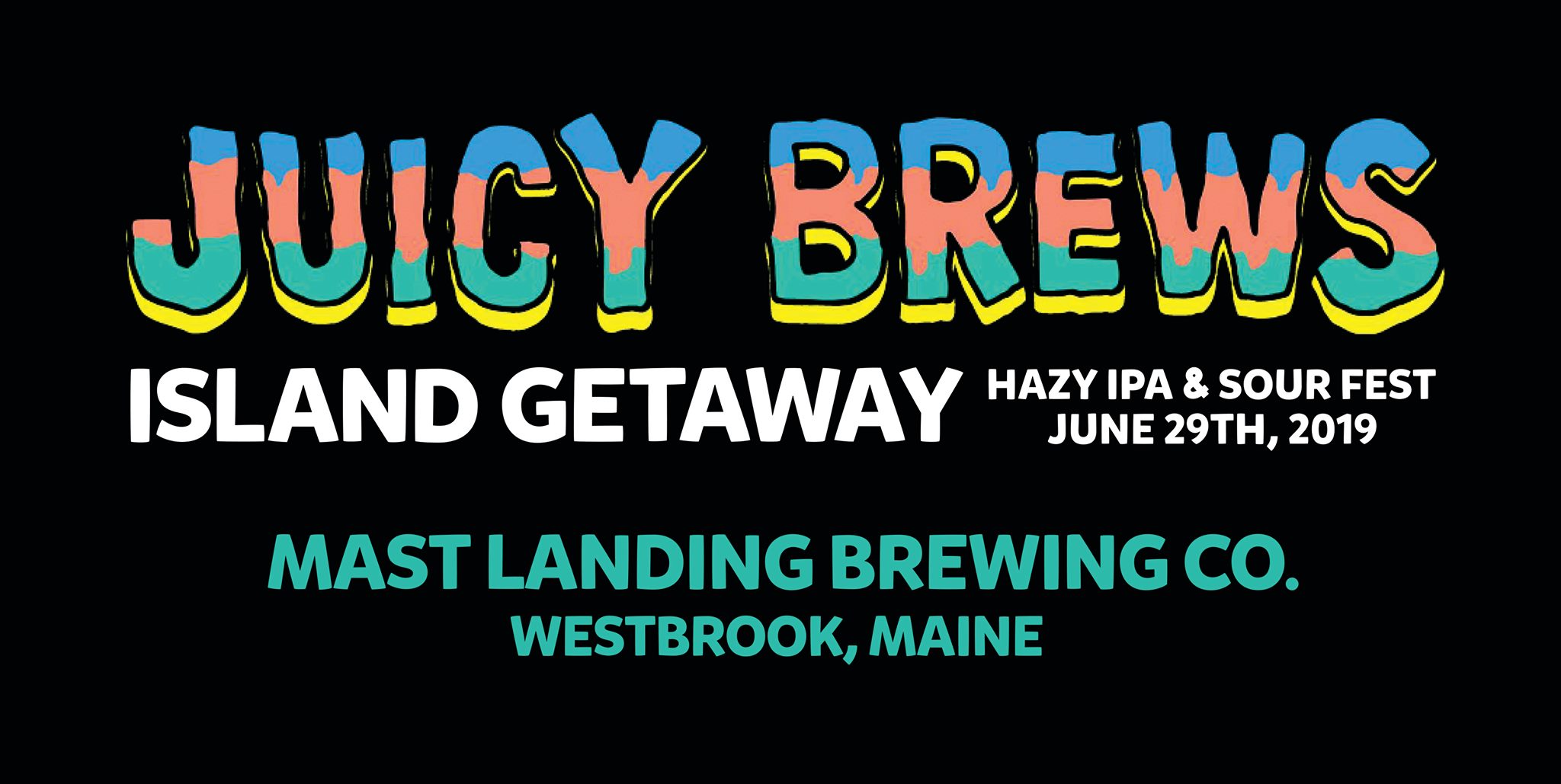Shop
6 Questions with Steve D’Eva, Co-Owner of Foreign Objects Beer Co.
Say hi to Steve at Juicy Brews Island Getaway!
Want to try Foreign Objects’ beer? Catch them at Juicy Brews Island Getaway in Portland, ME on June 29th. Tickets and more info can be found here.
I think the first time I had a Foreign Objects beer was at Ivan Ramen in New York City. I’d heard some buzz about the New Paltz, New York-based brewery on Instagram and was excited to finally try their beer. At first glance, they had the trappings of many northeast breweries: eye-catching can art, a passionate social media following, and, as it seemed to me, a reliance on juicy IPAs. But, with a little more poking around, it became clear that Foreign Objects wasn’t just another hazy beer brewery. Foreign Objects makes modern hoppy ales and classic crisp lagers, both styles brewed with intentionality and precision. In fact, after having this conversation with Steve D’Eva, Co-Owner and Director of Brewing Operations at Foreign Objects, I found out that Foreign Objects was at the cutting edge of New England IPA. Before Foreign Objects, D’Eva had worked at Tired Hands in Philadelphia and witnessed the growth of the style from nuanced interpretation to trendy product.
It’s no surprise, then, that the Foreign Objects beer I tried at Ivan Ramen was lovely, balanced, and evocative. It reminded of several breweries in the northeast like Foam, Forest + Main, and Threes, all of which deliver exquisite and thoughtful New England IPAs and progressive twists on classic styles.
Foreign Objects is a cerebral brewery, concerned with the philosophy and creativity behind the brewing process — I think this conversation with D’Eva illustrates that pretty well. But what grounds the brewery is its product: simple, delicious beer.
John A. Paradiso: How’d you get your start in the brewing industry?
Steve D’Eva: I spent twelve years working as a professional cook and chef in restaurants and high-end catering. During that entire time, I was far more interested in wine because, as a chef, that’s what you needed to know in the late ’90s. Then, around 2008 or ’09, I had a roommate who was getting into beer. He had a bottle of Jolly Pumpkin’s Luciernaga and shared some with me. I’d never tasted anything like it in my life and had never experienced such diversity of aromatic and taste characteristics from any wine I’d had before. That immediately got me intensely studying Belgian brewing traditions and getting into brewing beer at home.
JP: Where’d you go from there?
SD: Eventually, I attempted to escape the culinary service world by becoming a cheesemonger and seafood specialist for Whole Foods Market. I became the beverage department manager and brought in a beer from Brouwerij ‘t Gaverhopke that was actually a collaboration done with Tired Hands Brewing in Belgium before Tired Hands was actually a physical place. I loved the beer, looked them up, and found that I lived roughly 2 miles from the building they had just purchased in Ardmore, PA. I went over and left a note on a car with my phone number on it saying that I had the collab beer at the store and had a few bottles to share with everyone since they’d likely not tasted the final product yet, as I’d gotten the first shipment of the beer that day.

JP: I’m guessing they were interested.
SD: I got a call back about 20 minutes later inviting me to come by during construction to meet and taste the beer with everyone. After developing a relationship with the owner and the earliest group of people doing construction, I started coming by to help when I could, with the intention of being an unpaid bartender in exchange for being allowed to study in the brewery. About 4 months prior to opening, they had no menu to speak of and no real operational culinary plan. The owner saw a wine-tasting menu that I’d put together and quickly asked me to head up the culinary design and operations of the business. I agreed and that became my life 100 hours a week for a year plus, and was my first exposure to professional brewing on the inside. There’s a lot more which has led me to the present day, but that’s how I got my start. I owe it all to Ron Jeffries, man.
JP: Any horror stories from your time at the brewery?
SD: Nothing in recent days. I learn from my past failures and from my critical observation of other people’s failures.
JP: Anything from the past?
SD: I’d say the violent and overbearing reek of butyric acid in a 10-bbl kettle of souring beer in an un-ventilated tiny brewing space. The DIY walk-in at Tired Hands collapsing from water-damage in month 2 of operations and scraping the mold off of the rafters the next day. The basement — which stored grain and food — flooding like a broken dam not long after that. Lots of crazy shit. But the struggle, the pain, and the suffering we encounter as humans presents us with the wonderful opportunity to be truly exceptional by solving problems rather than fearing them.
JP: What are your thoughts on the state of hazy IPAs in the industry?
SD: I’ve been watching this for a while now, having been a big part of opening one of the early breweries partially responsible for defining the style. Every reactive innovation that seeks to solve some dissatisfaction — in this case, the reaction was to try changing the malt-and-bitterness focus of the West Coast IPA — eventually becomes a caricature of itself when enough mediocre “Nefarious Lich” type creatures start replicating it without doing so from a place of substantive intent. What began as a search to utilize the beautiful fullness of hop character is now just a monetarily-inspired rush to mimic and exaggerate only the most obvious aspects of the style. It leaves out all thoughtful consideration of what the goal was and why. Because it’s 10 percent what you say and 90 percent how you say it, you know? That’s what happens when the early 30-year-old business frat guys who think “The Game” is a textbook for business but don’t know the name Sun Tzu start seeing easy money in the brewing world! I mean, everything I have to say about this has already been said by the Don’t Drink Beer blog with far more wit and conciseness than I could hope to muster. “Frostingwater” and “VC Frat-Brewers” (I’m paraphrasing) sort of precipitate the point, I think.

JP: What’s your favorite beer to drink right now?
SD: It’s the season when Victory’s got Summer Love out, and I’ll drink that always and forever. Victory also came out with an absolutely gorgeous dry-hopped lager a bit ago called Home Grown that is absurdly good. I live just across a cornfield from Victory’s main brewery, so I get it straight from the teat, as it were. Other than that, I love whatever is on tap at Crime and Punishment, a small brewpub in Philly. I can never pass up fresh Orval. And my favorite beer of the last few years was a beautiful fucking beer called Gestalt from Fermentery Form, another small oak-fermenting brewery in Philadelphia.
JP: Are you reading anything interesting?
SD: Yes:
A biography of Elon Musk
The Three Body Problem by Liu Cixin
Stealing the Fire From Heaven by Stephen Mace
My Inner Bimbo by Sam Keith
Mycelium Running by Paul Stamets
JP: Give us a few songs to add to an all-star bottle share playlist.
SD: I like to make people miserable at bottle shares — probably why I’ve never been to one!
“Shrine” by Failure
“Musette and Drums” by The Cocteau Twins
Bill Pullman’s performance at the Luna Lounge in the film The Lost Highway
“Reload” by Ministry
“Lark’s Tongues in Aspic Part II” by King Crimson
“Red Slur” by Coil
“Colossus of Destiny” by The Melvins
Aram Khachiturian’s Tocatta in E-flat minor
Liked this article? Sign up for our newsletter to get the best craft beer writing on the web delivered straight to your inbox.




